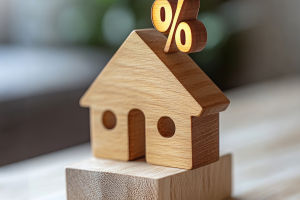The interplay between interest rates and gold prices remains a critical subject for investors and economists alike in 2025.
Gold, traditionally viewed as a safe haven asset, often moves inversely to interest rates, but recent market dynamics reveal a more complex relationship.
Interest Rate Movements and Gold's Opportunity Cost
Interest rates directly influence the opportunity cost of holding gold, a non-yielding asset. When rates rise, bonds and other interest-bearing investments become more attractive compared to gold, potentially leading to gold price declines. Conversely, declining interest rates reduce this opportunity cost, making gold a more compelling store of value.
However, 2025 has witnessed an unusual scenario where gold prices surged past $3,500 per ounce even as interest rates remained elevated, signaling shifting investor sentiment and broader economic concerns beyond simple rate dynamics.
Real Interest Rates: The More Accurate Indicator
Experts increasingly emphasize the importance of real interest rates—nominal yields adjusted for inflation—in predicting gold trends. Gold typically exhibits a strong inverse correlation with real yields: when real rates fall or turn negative, gold becomes more appealing as an inflation hedge and store of value. The 10-year Treasury Inflation-Protected Securities (TIPS) yield is closely watched to gauge real rate movements, which in turn impact gold demand and pricing.
Central Bank Policies and Market Expectations
Major central banks strategies shape gold's trajectory significantly. The Reserve Bank of Australia's recent rate cut to 3.85% in May 2025 reflected broader economic uncertainties, fuelling positive momentum for gold prices as market participants sought safe assets amidst tempered growth forecasts. Meanwhile, the U.S. Federal Reserve's cautious stance, with market expectations leaning towards one or two rate cuts by late 2025, continues to influence gold investment flows substantially.
Interplay with Currency Movements
Interest rates impact on gold prices is intertwined with currency fluctuations, particularly the strength of the U.S. dollar. A stronger dollar, often driven by higher interest rates, tends to suppress gold prices since it raises gold's cost for holders of other currencies. Conversely, 2025's weakening dollar trend has supported gold's rally despite persistent high yields, demonstrating the multifaceted nature of these financial forces.
As noted by John Greenwood, chief global economist at well known firm, in 2025, "Gold prices are no longer following the traditional script of moving inversely with interest rates alone. Instead, they are reflecting a complex blend of real yields, inflation expectations, and global volatility that continues to elevate gold's safe haven status."
Echoing this view, Grant Williams, investment strategist and author, remarked, "Even when nominal interest rates seem high, the erosion of purchasing power through inflation prompts investors to seek gold as a durable store of wealth, disrupting the classic interest rate-gold correlation."
While interest rate policies remain a fundamental driver of gold prices, 2025 showcases a more intricate reality where falling real interest rates, a weakening dollar, and ongoing economic uncertainties override traditional patterns. Investors must account for these overlapping factors when assessing gold's role within diversified portfolios.
Both central bank guidance and inflation-adjusted yields will be pivotal in determining whether gold sustains its rallies or faces volatility heading into 2026. The evolving landscape reaffirms gold's status not merely as a commodity but as a strategic financial instrument responsive to multifaceted economic signals.


